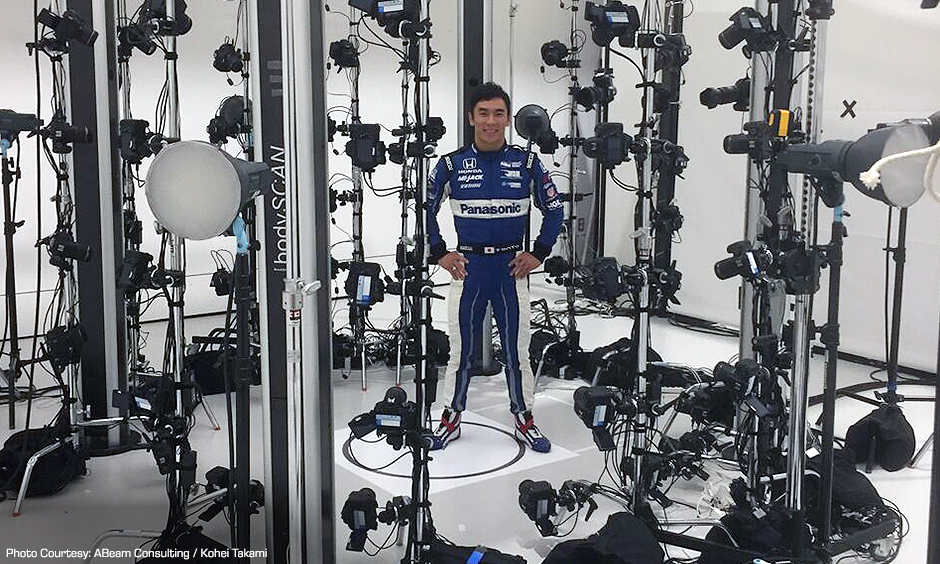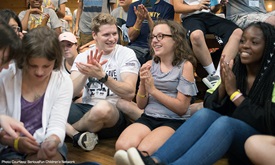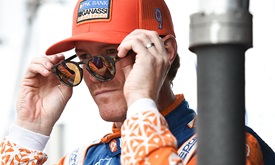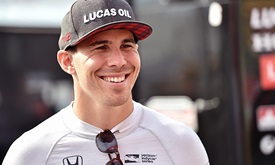Rahal partner ABeam adding new dimension to team technologies
SEP 10, 2018
The “hero card” is going high-tech.
The typical race driver autograph card – complete with photos of driver and car, usually with biographical information on the back – has been around for decades. Now, using virtual reality and smartphone technology, a Rahal Letterman Lanigan Racing partner is looking to bring the hero card into the 21st century.
ABeam Consulting, a Japanese firm working with RLL driver Takuma Sato, has created an “app” it is testing that would turn the flat, two-dimensional card into a 3D experience loaded with high-end information to dazzle Verizon IndyCar Series fans everywhere.
“We thought this hero card is kind of old-fashioned, so we thought we could do it better technically,” said Akito Takei, ABeam project manager. “That’s why we created a VR application.”
Through the app and with use of VR goggles, users can transform the traditional hero card into an experience complete with 360-degree views, driver audio recordings and more. ABeam used Sato as its “beta test” with the hope of further developing the technology this year and making it available for all INDYCAR drivers as soon as 2019.
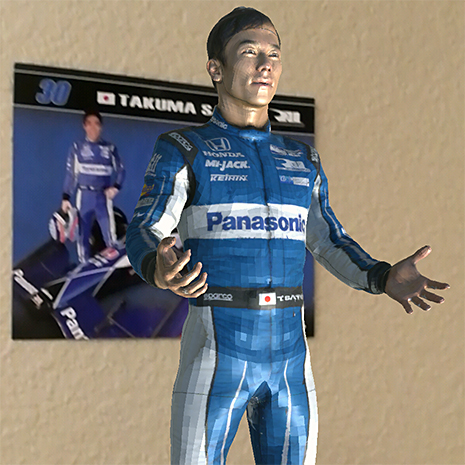 The process is simple, according to Kohei Takami, ABeam marketing leader. The driver sits through a 3D photo session of one to two hours (shown above) and then makes voice recordings to be included. ABeam formats and loads the data into the app, which is not currently available publicly.
The process is simple, according to Kohei Takami, ABeam marketing leader. The driver sits through a 3D photo session of one to two hours (shown above) and then makes voice recordings to be included. ABeam formats and loads the data into the app, which is not currently available publicly.
While Takami admitted the quality of the 3D image of Sato in the test version (at left) isn’t to the standard that they will deliver in the final product, the driver was amazed.
“He was like, ‘Cool, really very cool!’” Takami said of Sato’s response.
VR hero cards are just the tip of the iceberg that Takami said ABeam could provide.
“If we have a VR camera on the car, maybe we can create a VR racing experience,” he added.
ABeam already works with RLL behind the scenes to improve the team’s on-track performance. The company gathers data from the cars’ onboard computers and turns it into a readable graphic that Sato and teammate Graham Rahal can use to improve lap times.
“We acquire data from the car and then we visualize those data according to the driver’s requirement,” explained Ryosuke Taniguchi, the ABeam software engineer for the project. “It shows many data from the car. For example, the temperature, the tire surface, the center of pressure and the load – frontal load, rear load, total load – and steering angle, understeering angle, ride height.
“We created this in Japan for Super Formula (in 2016), and we created this application. We kind of exported it to INDYCAR. This is convenient for drivers to see what’s going on.”
Taniguchi said he has seen its benefits already.
“Takuma-san said it’s easier to grasp (relevant information from) the image, like, ‘Oh, I was understeering in that corner,’ that kind of thing.”
Sato, Rahal and the rest of the Verizon IndyCar Series drivers return to action for the 2018 season finale, the INDYCAR Grand Prix of Sonoma, on Sunday, Sept. 16. NBCSN and the Advance Auto Parts INDYCAR Radio Network have live coverage beginning at 6:30 p.m. ET.










